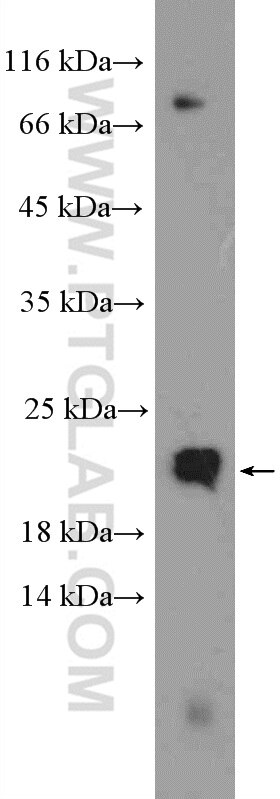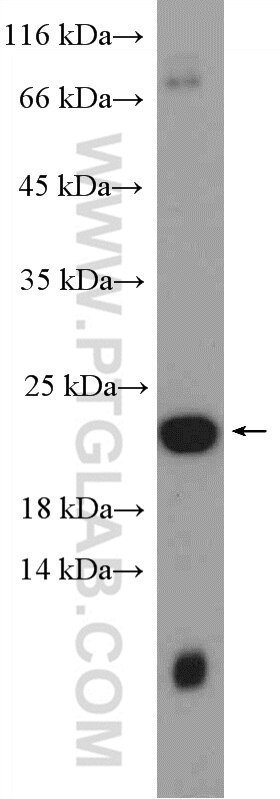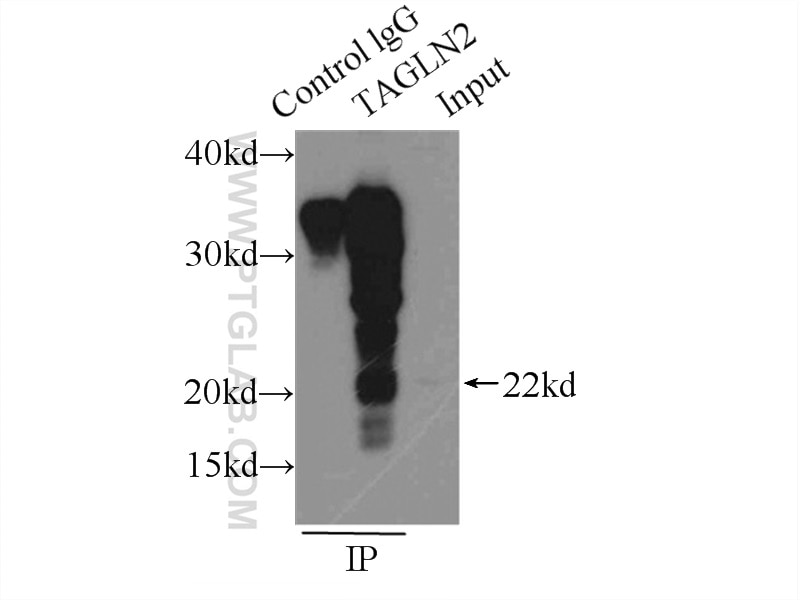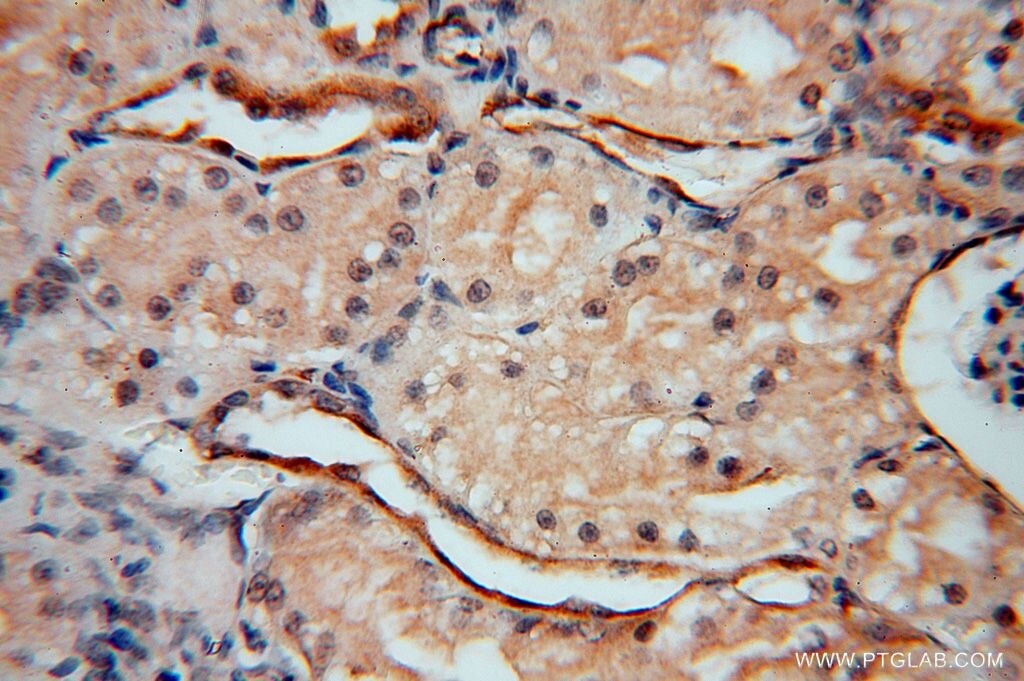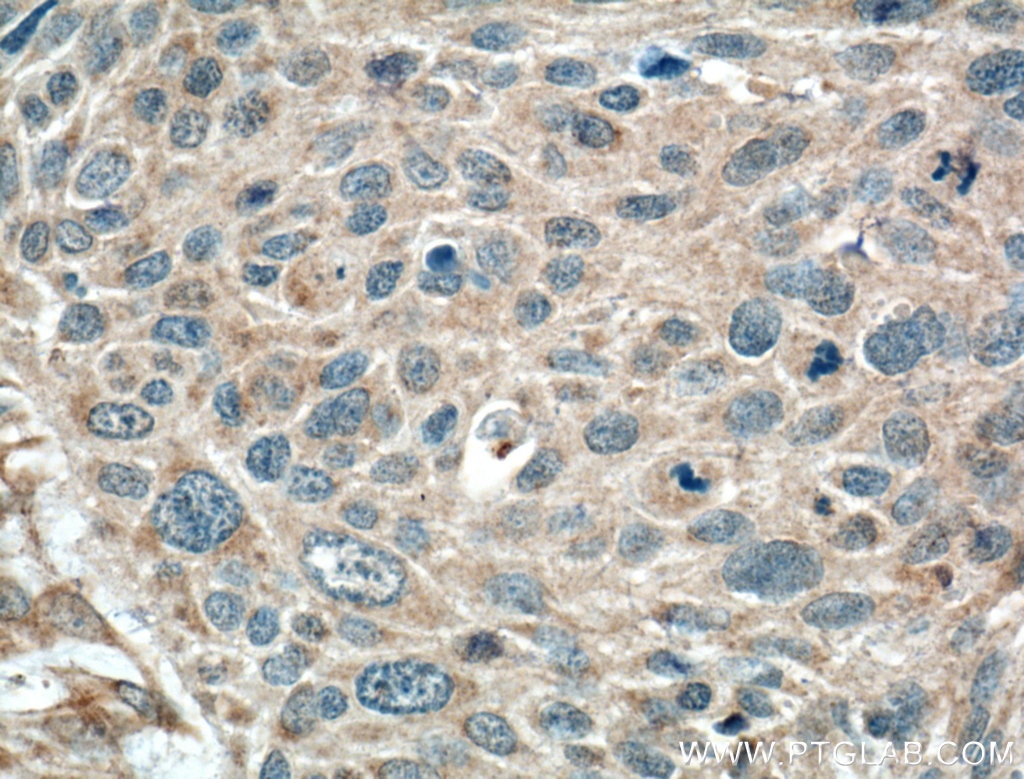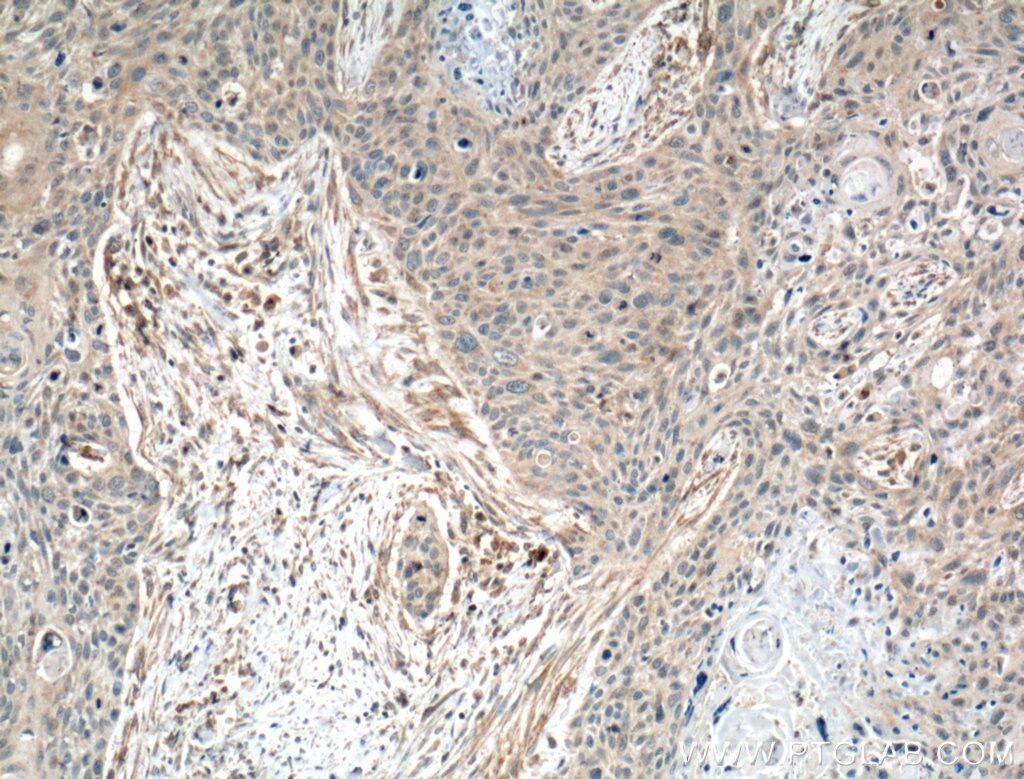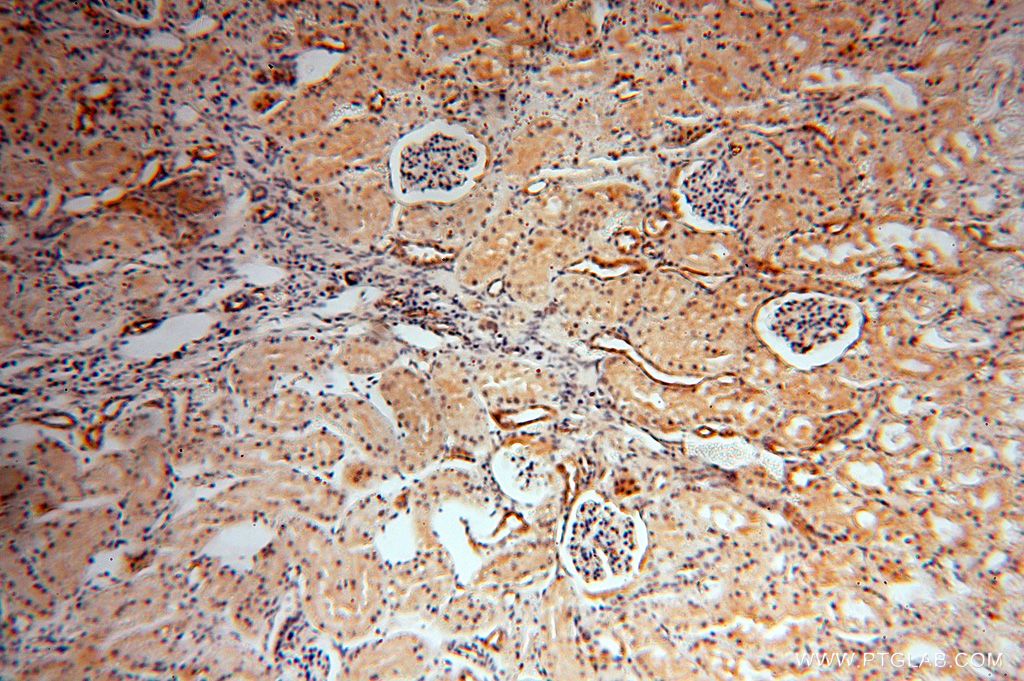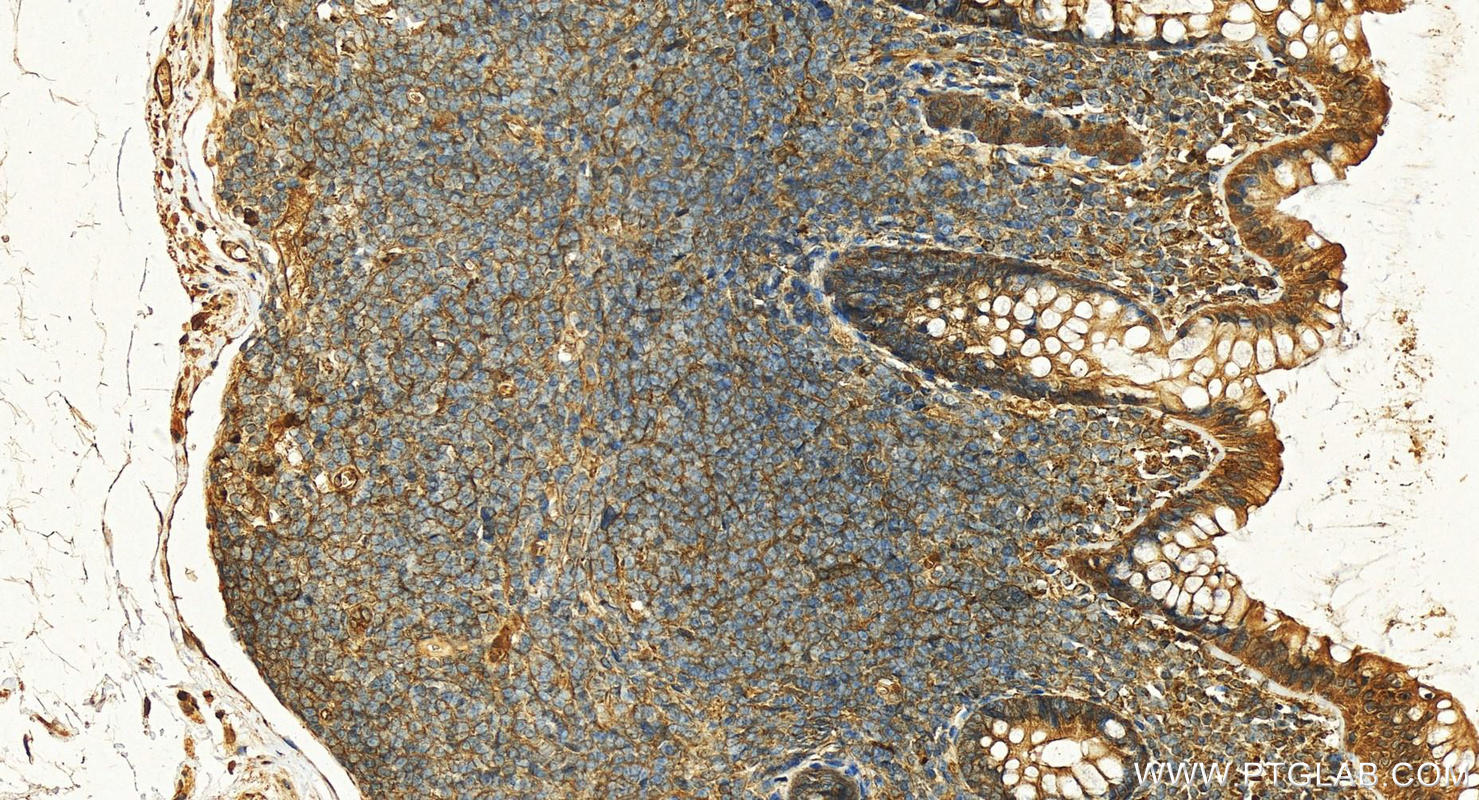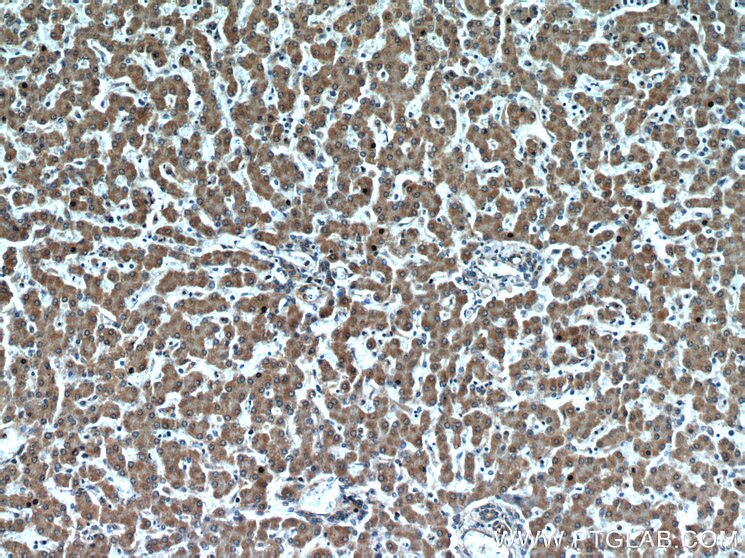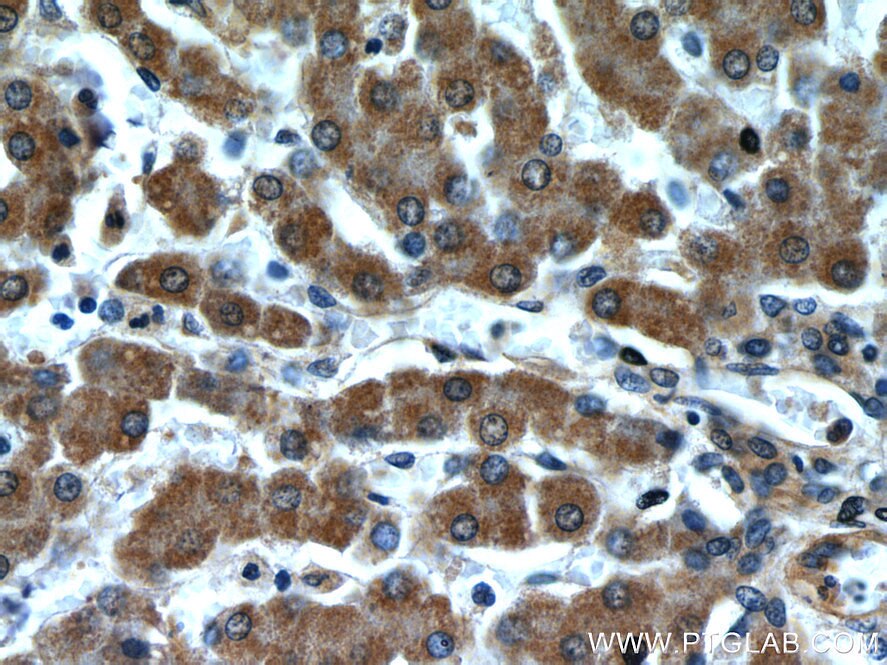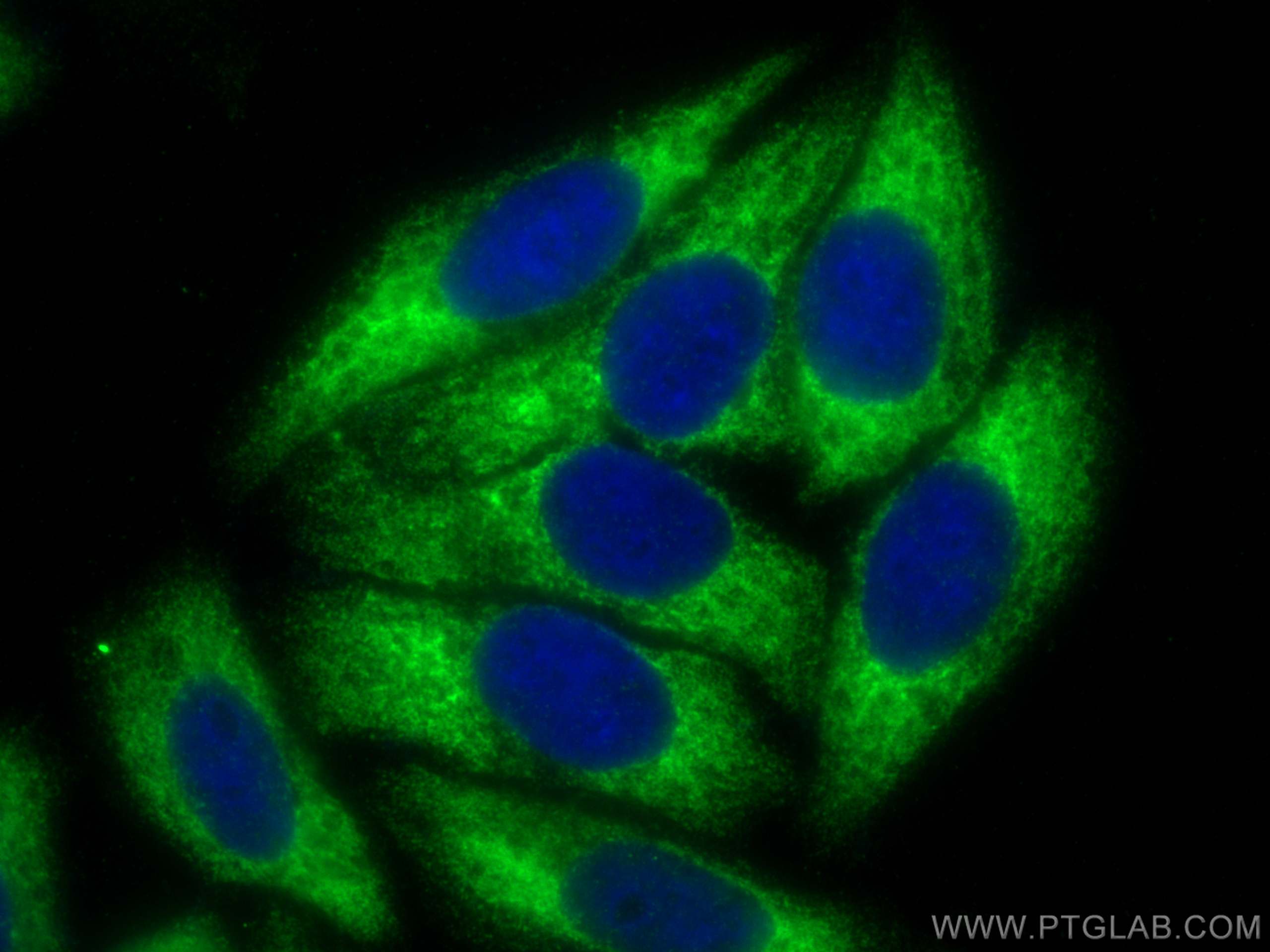- Phare
- Validé par KD/KO
Anticorps Polyclonal de lapin anti-Transgelin-2-specific
Transgelin-2-specific Polyclonal Antibody for WB, IHC, IF/ICC, IP, ELISA
Hôte / Isotype
Lapin / IgG
Réactivité testée
Humain
Applications
WB, IHC, IF/ICC, IP, ELISA
Conjugaison
Non conjugué
N° de cat : 15508-1-AP
Synonymes
Galerie de données de validation
Applications testées
| Résultats positifs en WB | cellules HeLa, cellules HEK-293 |
| Résultats positifs en IP | cellules L02 |
| Résultats positifs en IHC | tissu de cancer de l'œsophage humain, tissu hépatique humain, tissu rénal humain il est suggéré de démasquer l'antigène avec un tampon de TE buffer pH 9.0; (*) À défaut, 'le démasquage de l'antigène peut être 'effectué avec un tampon citrate pH 6,0. |
| Résultats positifs en IF/ICC | cellules HepG2, |
Dilution recommandée
| Application | Dilution |
|---|---|
| Western Blot (WB) | WB : 1:500-1:1000 |
| Immunoprécipitation (IP) | IP : 0.5-4.0 ug for 1.0-3.0 mg of total protein lysate |
| Immunohistochimie (IHC) | IHC : 1:50-1:500 |
| Immunofluorescence (IF)/ICC | IF/ICC : 1:200-1:800 |
| It is recommended that this reagent should be titrated in each testing system to obtain optimal results. | |
| Sample-dependent, check data in validation data gallery | |
Applications publiées
| KD/KO | See 2 publications below |
| WB | See 6 publications below |
| IHC | See 2 publications below |
| IF | See 1 publications below |
| IP | See 1 publications below |
Informations sur le produit
15508-1-AP cible Transgelin-2-specific dans les applications de WB, IHC, IF/ICC, IP, ELISA et montre une réactivité avec des échantillons Humain
| Réactivité | Humain |
| Réactivité citée | Humain |
| Hôte / Isotype | Lapin / IgG |
| Clonalité | Polyclonal |
| Type | Anticorps |
| Immunogène | Peptide |
| Nom complet | transgelin 2 |
| Masse moléculaire calculée | 22 kDa |
| Poids moléculaire observé | 22 kDa |
| Numéro d’acquisition GenBank | NM_003564 |
| Symbole du gène | Transgelin-2/TAGLN2 |
| Identification du gène (NCBI) | 8407 |
| Conjugaison | Non conjugué |
| Forme | Liquide |
| Méthode de purification | Purification par affinité contre l'antigène |
| Tampon de stockage | PBS with 0.02% sodium azide and 50% glycerol |
| Conditions de stockage | Stocker à -20°C. Stable pendant un an après l'expédition. L'aliquotage n'est pas nécessaire pour le stockage à -20oC Les 20ul contiennent 0,1% de BSA. |
Informations générales
The transgelin family is a group of proteins that belong to 22 kDa actin-related corpnin superfamily. Of all three isoforms, transgelin 1 is the best characterized. Transgelin 1, also known as SM22 alpha, is a specific marker for differentiated smooth muscle cells. Transgelin 2, also known as SM22 beta, is expressed by both smooth muscle and non-smooth muscle cells in a temporally and spatially regulated pattern. Trangenlin 3, also known as NP25, is only found in highly differentiated neuronal cells. This antibody can bind transgelin 2 specifically, but not trangelin 1 or 3.
Protocole
| Product Specific Protocols | |
|---|---|
| WB protocol for Transgelin-2-specific antibody 15508-1-AP | Download protocol |
| IHC protocol for Transgelin-2-specific antibody 15508-1-AP | Download protocol |
| IF protocol for Transgelin-2-specific antibody 15508-1-AP | Download protocol |
| IP protocol for Transgelin-2-specific antibody 15508-1-AP | Download protocol |
| Standard Protocols | |
|---|---|
| Click here to view our Standard Protocols |
Publications
| Species | Application | Title |
|---|---|---|
Front Oncol An Essential NRP1-Mediated Role for Tagln2 in Gastric Cancer Angiogenesis.
| ||
J Gastroenterol Hepatol The tumor-suppressive function of miR-1 by targeting LASP1 and TAGLN2 in esophageal squamous cell carcinoma. | ||
Cancer Cell Int MiR-613 inhibits the proliferation, migration, and invasion of papillary thyroid carcinoma cells by directly targeting TAGLN2. | ||
Biosci Rep The tumor-suppressive function of miR-1296-5p by targeting EGFR and CDK6 in gastric cancer. | ||
PLoS One Transgelin 2 participates in lovastatin-induced anti-angiogenic effects in endothelial cells through a phosphorylated myosin light chain-related mechanism.
| ||
Biochem Biophys Res Commun Transgelin-2 contributes to proliferation and progression of hepatocellular carcinoma via regulating Annexin A2. |
